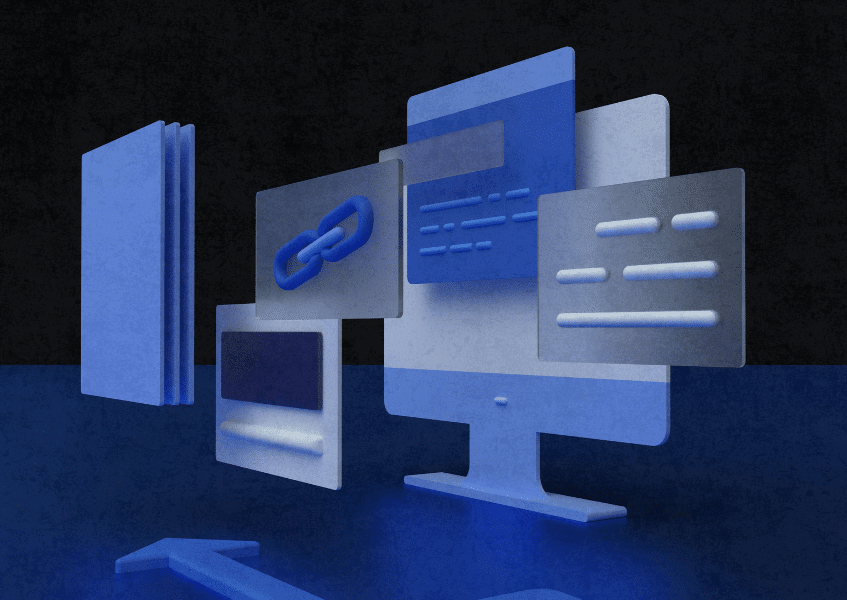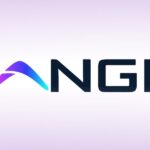Effective project management is not just desirable; it’s essential. From coordinating teams spread across continents to ensuring timely delivery of complex projects, the challenges are numerous. This is where project management software steps in, offering a powerful suite of tools to streamline processes, enhance collaboration, and boost overall project success rates.
Gone are the days of juggling spreadsheets, emails, and endless meetings. Project management software provides a centralized platform where every aspect of a project, from tasks and timelines to resources and budgets, is meticulously tracked and managed. This translates into improved visibility, increased efficiency, and, ultimately, a greater chance of achieving project goals. In this article, we delve into the advantages of leveraging project management software, exploring how it can transform the way you plan, execute, and deliver projects.
Advantage #1: Enhanced Collaboration
Project management software serves as a virtual hub where team members, regardless of their geographical location, can seamlessly collaborate. It facilitates real-time communication, document sharing, and task assignment, breaking down silos and fostering a sense of shared ownership.
- Centralized Communication: All project-related discussions, updates, and feedback are consolidated within the software, eliminating the need to sift through endless email threads or rely on fragmented communication channels.
- Document Sharing and Version Control: Team members can easily share and access the latest versions of project documents, ensuring everyone is on the same page and minimizing confusion.
- Task Assignment and Tracking: Tasks can be assigned, tracked, and monitored within the software, providing clarity on individual responsibilities and progress.

Real-Life Example: A global marketing team uses project management software to coordinate the launch of a new product campaign. Team members in different time zones collaborate seamlessly, sharing creative assets, providing feedback, and tracking progress in real-time, ensuring a successful and cohesive campaign launch. The utilization of project management software streamlined communication and file sharing, enabling the team to overcome geographical barriers and achieve a unified goal.
Advantage #2: Improved Project Planning
Project management software offers robust planning tools, enabling project managers to create detailed project plans, define milestones, and set realistic timelines. This proactive approach minimizes the risk of scope creep, delays, and budget overruns.
- Gantt Charts: Visualize project timelines, dependencies, and critical paths, allowing for better resource allocation and proactive risk management.
- Milestone Tracking: Set and track key project milestones, ensuring progress is monitored and potential roadblocks are identified early on.
- Resource Management: Optimize resource allocation by identifying potential conflicts and ensuring the right people are assigned to the right tasks at the right time.
Real-Life Example: A construction company uses project management software to plan a complex building project. The software helps them create a detailed project schedule, identify potential bottlenecks, and allocate resources effectively, ensuring the project stays on track and within budget.
Advantage #3: Increased Visibility
Project management software provides a bird’s-eye view of project progress, empowering stakeholders to monitor key metrics, identify potential issues, and make informed decisions.
- Dashboards and Reports: Access real-time dashboards and generate customizable reports to track project health, budget status, and resource utilization.
- Risk Management: Proactively identify and mitigate risks by tracking potential issues and implementing contingency plans.
- Data-Driven Decision Making: Make informed decisions based on real-time project data, ensuring resources are allocated effectively, and potential roadblocks are addressed proactively.
Real-Life Example: A software development team uses project management software to track the progress of a new product release. The software provides real-time visibility into task completion rates, bug reports, and overall project health, enabling the team to identify and address potential issues early on, ensuring a smooth and timely release.
Advantage #4: Time Management
Efficient time management is crucial for project success. Project management software helps teams stay on schedule by providing tools for task prioritization, time tracking, and deadline management.
- Task Prioritization: Prioritize tasks based on importance and urgency, ensuring critical activities are completed on time.
- Time Tracking: Track time spent on individual tasks, providing insights into resource allocation and productivity.
- Deadline Management: Set and manage deadlines, ensuring tasks are completed on time and potential delays are identified early on.
Real-Life Example: A creative agency uses project management software to manage multiple client projects simultaneously. The software helps them prioritize tasks, track time spent on each project, and meet deadlines consistently, ensuring client satisfaction.
Advantage #5: Streamlined Communication
Effective communication is the cornerstone of successful project management. Project management software centralizes communication, ensuring everyone is informed and aligned.
- Centralized Communication Platform: All project-related communication is consolidated within the software, eliminating the need to rely on multiple communication channels.
- Real-Time Updates: Team members can share updates and progress in real-time, ensuring everyone is informed and aligned.
- Reduced Miscommunication: Centralizing communication minimizes the risk of miscommunication and ensures everyone is on the same page.
Real-Life Example: A remote team uses project management software to collaborate on a research project. The software provides a centralized platform for communication, enabling team members to share findings, discuss challenges, and provide feedback in real-time, fostering a sense of connection and collaboration despite geographical distances.
Advantage #6: Cost Management
Keeping projects within budget is a constant challenge. Project management software offers tools for budget tracking, expense management, and cost forecasting, ensuring financial control.
- Budget Tracking: Monitor project expenses in real-time, ensuring spending stays within allocated budgets.
- Expense Management: Track and categorize project-related expenses, providing insights into cost allocation and potential areas for savings.
- Cost Forecasting: Forecast project costs based on current spending and resource utilization, allowing for proactive budget adjustments.
Real-Life Example: A non-profit organization uses project management software to manage a fundraising campaign. The software helps them track donations, expenses, and overall budget status, ensuring transparency and accountability in financial management.
Advantage #7: Resource Management
Effective resource management ensures the right people are assigned to the right tasks at the right time. Project management software provides tools for resource allocation, workload management, and capacity planning.
- Resource Allocation: Assign tasks to team members based on their skills and availability, ensuring optimal resource utilization.
- Workload Management: Monitor individual workloads, ensuring no one is overloaded or underutilized.
- Capacity Planning: Forecast resource needs based on upcoming projects and tasks, allowing for proactive hiring or resource adjustments.
Real-Life Example: An IT consulting firm uses project management software to manage its pool of consultants. The software helps them track consultant availability, skills, and project assignments, ensuring the right consultants are assigned to the right projects, maximizing efficiency and client satisfaction.
Advantage #8: Task Management
Breaking down projects into manageable tasks is key to successful execution. Project management software offers tools for task creation, assignment, and tracking, ensuring clarity and accountability.
- Task Creation and Assignment: Create and assign tasks to team members, providing clear instructions and deadlines.
- Task Tracking and Progress Monitoring: Track task progress in real-time, ensuring tasks are completed on time and potential roadblocks are identified early on.
- Task Dependencies: Define task dependencies, ensuring tasks are completed in the correct order and potential bottlenecks are avoided.
Real-Life Example: A product development team uses project management software to manage the development of a new mobile app. The software helps them break down the project into smaller tasks, assign tasks to team members, and track progress in real-time, ensuring the project stays on track and is delivered on time.
Advantage #9: Risk Management
Proactive risk management is essential for project success. Project management software provides tools for risk identification, assessment, and mitigation, minimizing the impact of potential issues.
- Risk Identification: Identify potential risks that could impact the project, such as resource constraints, technical challenges, or external factors.
- Risk Assessment: Assess the likelihood and impact of each risk, prioritizing mitigation efforts.
- Risk Mitigation: Develop and implement contingency plans to mitigate the impact of potential risks, ensuring project continuity.
Real-Life Example: An event planning company uses project management software to manage a large conference. The software helps them identify potential risks, such as venue availability, speaker cancellations, or inclement weather, and develop contingency plans to ensure the event runs smoothly regardless of unforeseen challenges.
Advantage #10: Reporting and Analytics
Data-driven insights are crucial for project evaluation and continuous improvement. Project management software provides tools for generating reports, analyzing project data, and identifying areas for optimization.
- Customizable Reports: Generate reports tailored to specific project needs, providing stakeholders with the information they need to make informed decisions.
- Project Data Analysis: Analyze project data to identify trends, bottlenecks, and areas for improvement.
- Continuous Improvement: Leverage insights from project data to refine processes, optimize resource allocation, and enhance overall project performance.
Real-Life Example: A marketing agency uses project management software to track the performance of various marketing campaigns. The software generates detailed reports on campaign reach, engagement, and conversions, enabling the agency to identify successful strategies and optimize future campaigns for maximum impact.
Conclusion
In project management, the adage “time is money” rings especially true. Project management software emerges as an indispensable ally, offering a powerful arsenal of tools to streamline processes, foster collaboration, and mitigate risks. From enhanced planning and resource management to real-time visibility and data-driven decision-making, the benefits are manifold. By embracing this technology, businesses can unlock new levels of efficiency, productivity, and project success, paving the way for a brighter future.
Published by: Nelly Chavez

















